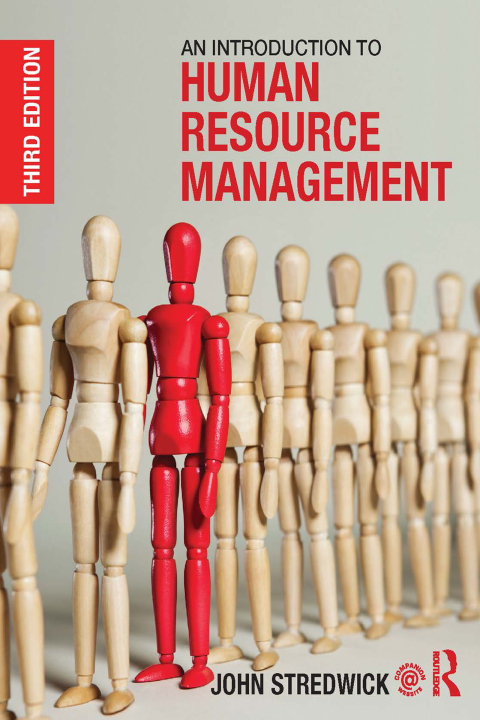Description
Efnisyfirlit
- Cover Page
- Half Title Page
- Title Page
- Copyright Page
- Table of Contents
- List of illustrations
- Preface to the third edition
- Visual tour of An Introduction to Human Resource Management
- 1 Introduction
- Introduction
- The economic and business context
- Origins of human resource management
- The role of human resources today
- Best practice or best fit?
- Current concepts in human resourcing
- 2 Recruitment, Employer Branding and Employer of Choice
- Introduction
- Employer branding
- Difficulties with employer branding
- Identifying talent
- Drafting a recruitment policy
- Does a vacancy exist?
- Defining the details of the vacancy
- Attracting the applicants
- Integrated approach to recruitment
- Who carries out the recruitment and selection processes?
- 3 Selection
- Introduction
- Talent management
- Short-listing
- Selection testing
- Activity 3.1
- Activity 3.2
- Interviewing the candidates
- Assessment centres
- Choosing the successful candidate
- Technology in selection
- Using a variety of approaches
- Obtaining references
- Offering the position
- Evaluating the selection process
- 4 Relationships with Employees
- Introduction
- Workplace negotiating
- Activity 4.1
- Involvement and participation
- Employee engagement
- Dealing with individual sources of conflict — grievance, discipline and dismissal
- Redundancy and its implications
- Activity 4.2
- Activity 4.3
- 5 Performance Management
- Introduction
- The purpose of performance management
- What should the process be called?
- Stages in the performance management framework
- Operational issues
- Activity 5.1
- Conclusion
- Extended activity/case study — balanced scorecard
- 6 Rewarding Employees
- Introduction
- Strategic elements of reward
- Activity 6.1
- Component parts of the reward package
- Designing basic pay structures
- Paying for performance
- Using technology in reward
- 7 Flexible Working
- Introduction
- Flexible working practices
- The flexible firm
- Temporal flexibility
- Activity 7.1.
- Numerical flexibility
- Geographical flexibility
- Activity 7.2
- Activity 7.3
- Occupational flexibility
- Policies that support flexibility
- Summing up flexibility
- Talent management
- Technology and flexibility
- 8 Learning and Talent Development
- Introduction
- How people learn
- Talent management
- Tailored approach to learning
- Training aims and objectives
- Specialist learning and talent programmes and initiatives
- Activity 8.1
- National government and non-governmental schemes and initiatives
- Legal considerations in learning and development activities
- The role and responsibilities of learning and talent development practitioners
- Is the role changing?
- 9 Equal Opportunities and Managing Diversity
- Introduction
- The business case for equal opportunities
- Equal opportunities legislation
- Discrimination as it applies to specific groups
- Regulating equality and human rights
- Remedies for the employee
- Approaches to equal opportunities policy
- Implications for equal opportunities (EO) practice
- Criticism of the equality industry
- 10 Health, Safety and Employee Well-Being
- Introduction
- Legal interventions
- Enforcing the law
- Risk assessment
- Welfare issues and policies
- Challenges to management and the role of human resources
- Activity 10.1
- 11 An International Perspective
- Introduction
- National culture — Hofstede’s studies
- Globe study — culture and leadership effectiveness
- Convergence and divergence
- Global comparisons
- HRM models and international strategies for overseas subsidiaries
- Labour standards and social responsibility
- 12 Human Resource Planning
- Introduction
- Reasons for lack of planning
- Purpose of human resource planning
- Planning for specific purposes
- Carrying out human resource planning
- Producing the human resource plan
- Technology
- Conclusion
- Subject index
- Author index






Reviews
There are no reviews yet.